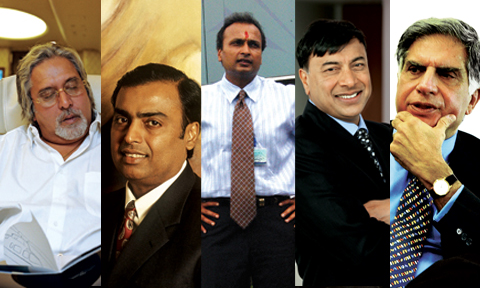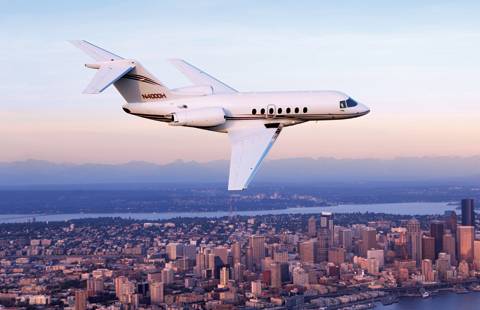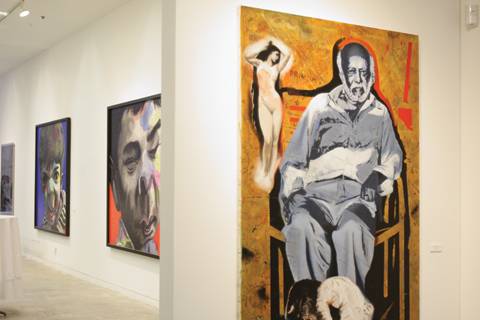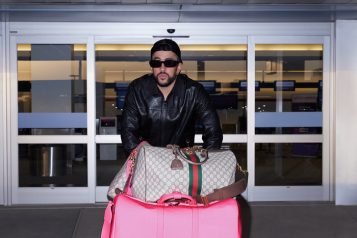India has always been rich with culture, history, and class. As of late, the Asian nation is also rich with, well, riches. While the U.S. still holds the No. 1 rank as the country that the most billionaires call home (thanks to more than 450 residents with a net worth over the 10-figure mark), India is closing in fast, coming in at No. 4 with 53 total billionaires, behind Russia and Germany. In fact, four of the 10 wealthiest individuals in the world are proud to call India home.
While the nation’s extremely large population—the second highest in the world, trailing only China—provides a certain statistical advantage, when Forbes began tracking billionaires in 1987, only one Indian family made the cut. When the country won its independence from Britain merely 60 years ago, India was one of the poorest nations on Earth. In stark contrast, when the World Wealth Report was published by Capgemini and Merrill Lynch this year, it reported that India had the fastest growing population of individuals holding at least $1 million in financial assets during 2007. Combine that with The Household Wealth Index’s forecast that India will become the eighth largest wealth market by the year 2017 (its currently listed at No. 14), and the evidence is overwhelming: India is an economic powerhouse.
Many Indians are wholeheartedly embracing the luxury lifestyle that this newfound wealth affords them, perhaps none more so than Mukesh Ambani, a man listed as the world’s fifth wealthiest individual in 2008 with a net worth of $43 billion, up $22.9 billion since last year. He heads petrochemicals giant Reliance Industries, the country’s most valuable company.
Mukesh has no qualms about enjoying his wealth, part of which he inherited from his father, renowned industrialist Dhirubhai Ambani. (His estranged brother, Anil Ambani, split the inherited wealth. Anil is listed by Forbes as the world’s sixth wealthiest, with a net worth of $42 billion.) Mukesh is in the midst of building a $2 billion, 27-story home in the heart of Mumbai. No two floors will be alike, as the home’s shape is based on Vaastu, an Indian tradition much like Feng Shui that is said to move energy beneficially through the building via the strategic placement of materials, rooms, and objects.
The home isn’t the first time Mukesh Ambani made headlines for his lavish displays of wealth. In November 2007, newspapers across the country reported the magnate purchased his wife a $59 million Airbus A319 for her birthday. A spokesperson for Airbus could not comment, but was not hesitant to say, “Dr. Vijay Mallya was the first customer for an Airbus ACJ in India.”
India’s highest profile businessman, Mallya is chairman of the UB Group, which has a hand in beer and liquor, life sciences, engineering, agriculture and chemicals, information technology, and civil aviation. He founded Kingfisher Airlines in 2005 and purchased the Spyker Formula 1 team in 2007 for 88 million euros, promptly changing the name to Force India. Mallya’s United Breweries acquired Scottish distillery Whyte & Mackay for $1.2 billion in May 2007, making it the second-largest spirits group in the world. He is also founder of United Racing and Bloodstock Breeders, has a stake in U.S.-based Epic Airline, and is a member of the Indian parliament. Yet he manages to balance all of these work ventures with a play attitude that has led to a lifestyle could make Hugh Hefner jealous—even when Hef was in his prime.
The lavish soirees that take place onboard one of his yachts, the 311-foot Indian Empress, crawl with the world’s elite and often make international headlines. His 50th birthday party at the ornate Kingfisher Villa was a non-stop, five-day extravaganza on the sands of Goa. He pilots aircrafts for fun, collects vintage racing cars (some 260 in his portfolio), has more than 25 homes around the world, and possesses a penchant for diamond earrings and jeweled gold baubles. The international press has dubbed him “The King of Good Times,” and he is often likened as the Richard Branson of India.
His life is nothing short of decadent; he indulges his every whim while successfully running multiple multinational conglomerates that top their various industries. How? Very little sleep, for one. Yet through this constant go-go attitude, he has established a lifestyle that is virtually unmatched by any other Indian national. As such, an invitation to participate in a Mallya bash is a coveted commodity amongst Indians who aspire to experience even a small morsel of the mogul’s highly publicized good life.
It is this pining for the good life amongst nouveau riche Indian citizens that allowed luxury brands to invade India and thrive in its many metropolises. The most recognizable names in haute fashion and accessories have opened Indian outposts, satisfying the longing of the affluent for Eastern-inspired styles. Louis Vuitton, Jimmy Choo, Chopard, Gucci, Hermès, Christian Dior, Piaget, Tiffany & Co.: these top brands have been embraced by wealthy Indians who are as materialistic as their Western counterparts. Due to a lack of high-end retail avenues (think Fifth Avenue or Rodeo Drive) in the country’s poverty-ridden cities, many of these brands chose to open their doors in retail spaces in top-tier hotels. Yves Carcelle, chief executive for Louis Vuitton, was able to convince Biki Oberoi to turn his office at the Oberoi, New Delhi into the country’s first Louis Vuitton shop in 2003. Hermès joined Louis Vuitton amidst Oberoi’s plush digs this year, where the brand operates alongside boutiques for Chanel and Hugo Boss.
Luxury brands are no longer confined to the hotels, thanks to DLF’s new Emporio Mall in south Delhi, the country’s first couture-laden shopping enclave. The design is courtesy of top architect Mohit Gujral’s Design Plus, who infused the five-floor, 320,000-square-foot space with Italian marble, burnished wood, and gleaming brass detailing—a setting that almost steals the spotlight from the brands that have opened in this piece of retail heaven. Virtually every name that is ubiquitous with high fashion and haute couture has staked a claim in DLF’s Emporio.
As the largest real estate company in India with more than 224 million square feet of existing development and 751 million square feet of planned projects, DLF can take a large part of the responsibility for the rise of the consumer age in India. DLF opened malls across the country, leading the company to be called “the soul of the Indian shopping revolution” thus helping to establish India as the fifth-largest retail destination in the world.
The company is headed up by Kushal Pal Singh, the world’s eighth wealthiest individual with a net worth of $30 billion. His climb to the top 10 has been swift; Forbes had Singh listed as No. 42 in 2007. Singh inherited his father-in-law’s Delhi Land & Finance in 1961, and he has since turned it into one of India’s prominent brands, recognizable on a worldwide scale. The recognition was further elevated when DLF acquired a controlling stake in Amanresorts in November 2007 for $400 million. Amanresorts provide playgrounds for über wealthy travelers around the world, and Aman-i-Khás and Amanbagh operate in India.
The size of DLF’s expansive portfolio can only be matched by that of ArcelorMittal, which accounts for 10 percent of the world’s crude steel production. India-native Lakshmi Mittal runs the conglomerate, which has allowed him to amass a fortune of $45 billion. Only three individuals in the world—Bill Gates, Carlos Slim Helú, and Warren Buffett—have larger personal fortunes.
Mittal is often referred to as the Indian reincarnation of Andrew Carnegie. In January 2008, he was awarded the Padma Vibhushan, India’s second highest civilian honor, by the president of India. He’s collected an array of accolades (Man of the Year by the Financial Times, Newsmaker of the Year by Time magazine, European Businessman of the Year by Fortune magazine, Entrepreneur of the Year by the Wall Street Journal, et cetera, et cetera), and he uses his wealth to enjoy the good life. Mittal has residences spanning the globe in some of the most sought-after neighborhoods, including an estate on London’s Kensington Palace Gardens. The home is decorated with marble from the same quarry that supplied the Taj Mahal, prompting his London palace to be dubbed “Taj Mittal.”
While Mittal is no doubt India’s most respected businessman, Tata Group is one of India’s oldest, largest, and most respected business conglomerates. Tata is the parent company of yet another Indian-controlled luxury hotel group, Taj Hotels Resorts and Palaces. The company’s roots can be traced to 1903, when Jamsetji Nusserwanji Tata opened the Taj Mahal Palace & Tower in Mumbai. Today, Taj Hotels Resorts and Palaces comprises 57 hotels in 40 locations across India, with an additional 18 international hotels that include San Francisco’s Campton Place, Taj Boston, and New York’s The Pierre.
The Tata Group recently brought two highly respected luxury brands into Indian control through its purchase of Land Rover and Jaguar business from Ford Motor Company for $2.3 billion. It was an all-cash transaction. While the group may not yet sell the autos in India (although a small number of Land Rovers are available through an importer), it was a move that helps cement India’s place in the global economic spectrum as a real player in the luxury industry.
Tata Group also purchased venerable tea company Tetley for $430 million in 2000.
Today, the group’s businesses are spread over seven business sectors, comprising 96 companies, operating on six continents, and employing 350,000 people. The company is headed by Ratan Tata, who has been chairman of Tata Sons, the holding company of the Tata Group, since 1991.
The success of these Indian entrepreneurs is a source of inspiration for the entire country. And the lifestyle that is a result of that success can now be catered to by the best luxury brands from around the world, which have found a new home amidst India’s rich lands.





















